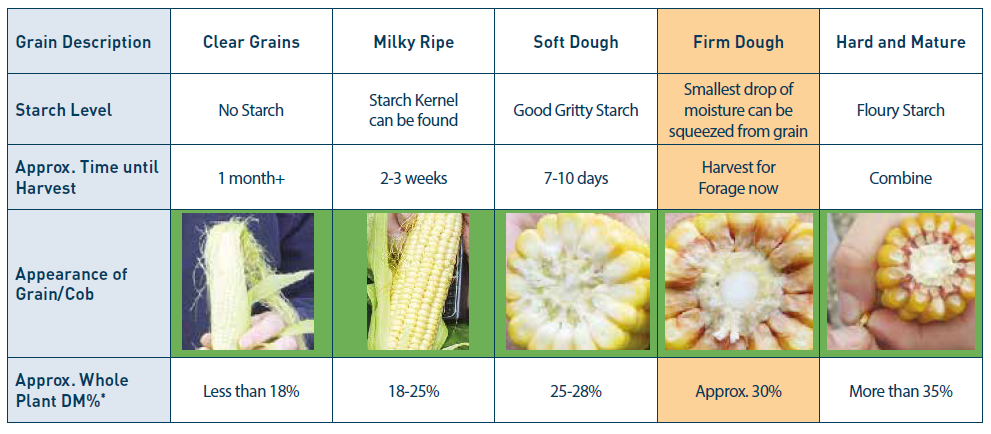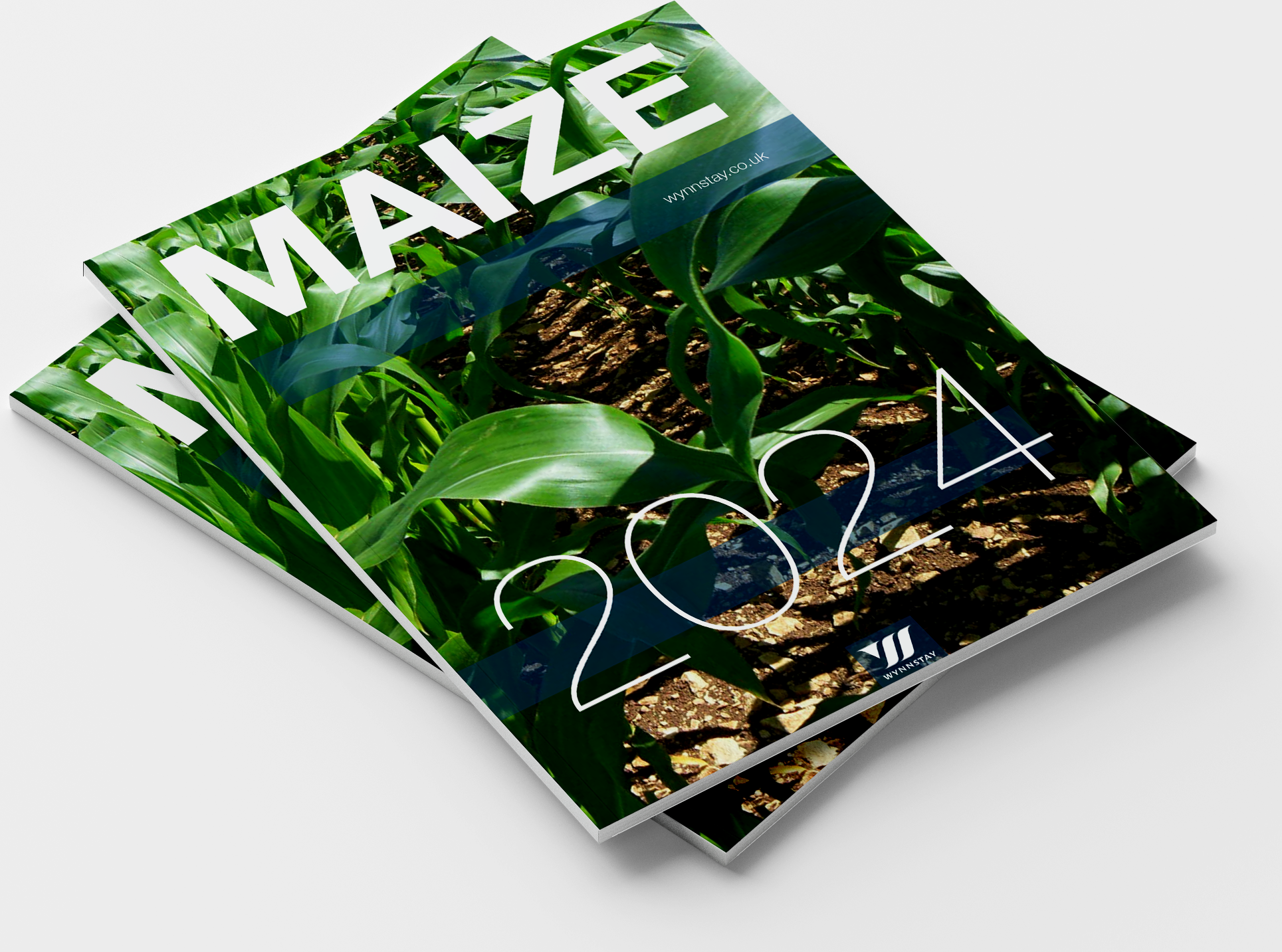When is the best time to harvest maize?
Harvesting maize at the wrong whole-plant DM can result in reduced maize silage quality. Don’t leave maize to die off before harvesting it, as many farmers do. We recommend harvesting according to the correct dry matter – for example when the whole plant is at around 30-33% DM. However, don’t leave it to get too dry as this makes it more difficult to consolidate in the clamp.
To help identify the % dry matter, the cob and kernel maturity, which directly correlate to DM, can roughly be assessed in the field in two steps.
- Firstly, collect at least five representative cobs and pull back the outer leaves. Pressing your fingernail into the kernels should result in a soft cheese texture at top of the cob and leave no indentation in kernels in the middle and bottom.
- Secondly, break the cobs in half to examine kernels. A visible line will indicate where the solid yellow starch changes to the milky white sugar portion of the kernel. One-third to one-half of the kernel should be yellow starch.
These rough assessments should be confirmed with an oven or microwave DM test.
Top tips for harvesting time
In addition to understanding the dry matter percentage, you need to get the plant cutting height right. The bottom of a maize stalk has little nutritional value. Most of the energy and dry matter yield comes from the cob.
Set your cutting height based on the DM content and energy content you want to achieve. In all cases, always leave at least 15 cm of stubble to avoid soil contamination. The stem below this height is also likely to contain high levels of Fusarium – carrying the risk of mycotoxins.
For chop lengths, while short chop lengths make consolidation easier in the clamp, they will have a direct impact on how the silage performs in the rumen. Consider a chop length of 1.5 to 2 cm. Be aware, though, that longer chop lengths will make consolidation to remove air from the clamp more difficult, increasing the risk of aerobic spoilage (silage heating).
A Guide to Cob Ripeness














